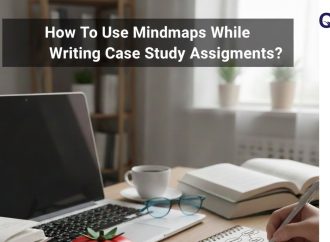Learning syllabus in detail is the most important and the initial step to enabling any aspirant who is preparing for the Common Law Admission Test (CLAT). The CLAT syllabus is the list of topics that will be covered in the exam, and this provides a clear guideline to one on how to plan his/her preparation.
Learning syllabus in detail is the most important and the initial step to enabling any aspirant who is preparing for the Common Law Admission Test (CLAT). The CLAT syllabus is the list of topics that will be covered in the exam, and this provides a clear guideline to one on how to plan his/her preparation. The students are always at a loss since without knowing the syllabus, they end up wasting time in irrelevant research or end up concentrating so much on one part and forgetting the rest. An organized syllabus can assist in the prioritization of study topic, time management and a decrease in studying anxiety. Given that the CLAT Exam Syllabus is not only competitive but also that the questions used in the exam are complex, a very clear understanding of syllabus can somehow give the students the power to be tactical in their strategy. All these sections cited in the syllabus are important in the final paper and therefore, to know them is the same as knowing how to win half the battle.
The Structure of the CLAT UG Syllabus
An overview of the structure of the CLAT UG syllabus is provided in the table below. The CLAT Syllabus 2026 is aimed at evaluating the ability of a candidate in different skill areas within which one requires in accomplishing legal studies. The syllabus of Undergraduate CLAT consists of five major segments which include English Language, Current Affairs along with General Knowledge, Legal Reasoning, Logical Reasoning and Quantitative Techniques. Every section is characterized by its careful design to measure the particular skills. The English Language section will check the knowledge of grammar and comprehension and the Current Affairs section will check awareness of the developments occurring in the country and the world. Legal Reasoning assesses the capability of using jurisprudence in an actual situation, Logical Reasoning tests the skills in reasoning and Quantitative Techniques tests the fundamental numerical skill. Being aware of the split and concentration of every area assists aspirants devise an equitable study plan and use the time available to the greater benefit.
English Language B: Development of Comprehension and Grammatical Skills
Those areas featured in the English part of the CLAT Entrance Exam Syllabus are more in the area of comprehension-based questions. The texts (approximately 450 words) which candidates are provided with are usually modern or historically important works of fiction and non-fiction writing. Upon finishing the passage, a list of questions is presented to the students according to which they can check their comprehension, vocabulary, and reasoning ability to make inferences. Reading speed is not enough, but it is necessary to comprehend the meaning, the arguments presented by the author and make reasonable conclusions. The students are also expected to be good at the English language as grammar and sentence correction questions will be used. Students are important readers and regular reading of newspapers, editorials and books makes them accustomed to reading in large chunks thus enabling greater performance on this section. This area of the syllabus can only be dealt with through practicing every day by using CLAT mock tests and comprehension activities.
Current Affairs and General Knowledge: Keeping in Touch
Current Affairs also has a big role to play in deciding the performance of a candidate. The events that will be covered in the CLAT Course Syllabus in this regard will be both national and international events of importance, government policies, landmark judgments, treaties, and major appointments. The questions are mostly on the passages which concern recent news and a student is expected to answer using the passage provided and basic general knowledge. This is to imply that frequent reading of newspapers is non-negotiable when you want to pass this section. The Hindu, Indian Express, monthly current affairs magazines, etc., are particularly useful. Besides facts when they are updated, students need to know the situation behind the events—why did something occur, its consequences, and its connection with the any legal or political environment. Indirectly, this is helpful in law school admissions because of both legal reasoning and essay writing.
The Brain of the CLAT Examination: Legal Reasoning
The most distinctive and important part of the CLAT syllabus is probably the part of Legal Reasoning. The section does not test the knowledge of the law, but would be an evaluation of skills in applying legal principles to a set of facts. Texts presented here can talk about law, state policy or ethics. It is then that students are expected to delve on queries depending on the rule factors and arguments conveyed in the passage and not what they already know. This is why it is vital to hone logical thinking and a steady, thoughtful mindset. Frequent practice of questions with legal reasoning of past year papers, together with test passages, makes one score high in the section. The constitutional matters, the basic rights, contracts and torts are popular subjects to frame questions. Knowledge of the method of premise identification and rule application at a deep level will be useful to any candidate.
Logical Reasoning: Interpretational Patterns and Logic
The CLAT syllabus has a Logical Reasoning part which tests a candidate on his/her critical and analytical ability. The part incorporates sentences, followed by sets of questions assessing the student on their skills to search arguments, reasoning, and pinpoint assumptions and conclusions. The aim is to know how the arguments are structured and enhance decision-making skills based on timely thinking. Examples are types of topics that can be based on analogies, syllogisms, questions based on inferences and logical puzzles. This section can be sharpened by reading opinion columns, puzzle books in reasoning, and reading editorial material. Because the questions are aimed at comprehension, speed reading together with logical clarity is a necessity. The superiority of this section is its mastery through timed practice and learning how to distinguish the conclusion and assumptions in a particular argument.
Quantitative Techniques: Succeeding at Basic Numeracy
This part of the CLAT syllabus is taken up in elementary mathematics studies of which extend till the 10th standard studies. Questions follow the reading of the texts containing data interpretation, graphs, tables, and charts, and then questions that require mathematical calculations. Although it is not a high-level math section, students must feel at home with basic arithmetic operations, percentages, averages, ratios, and easy algebra. It becomes difficult due to the time factor and the way questions are incorporated into word problems. Globally, students who are armed in this section are able to gain points very fast and this puts them in a good position. Short quizzes on a daily basis, calculating practice papers, and reviewing formulas can help in speeding up and improving accuracy. Even the students who are not good at maths can obtain good grades here by persistence and clarity of concepts.
Conclusion: Master the CLAT Syllabus to Maximize Success
The key aspect of good preparation is to have a comprehensive knowledge of the CLAT syllabus. Whether it is the beginning of the work or the last revision games, the study plan in correspondence with the syllabus leaves no area to lose time with the things that do not matter. Those sections have a different strategy and weightage and all of them need to be balanced and practiced equally, as a person needs to achieve success. Still with a clear direction where to study, there is confidence in preparation, substantially in evaluation of the progress and with a precise mindset to tackle the CLAT exam. After all, it is more important to know what to prepare as much as it is to know how to prepare.
















